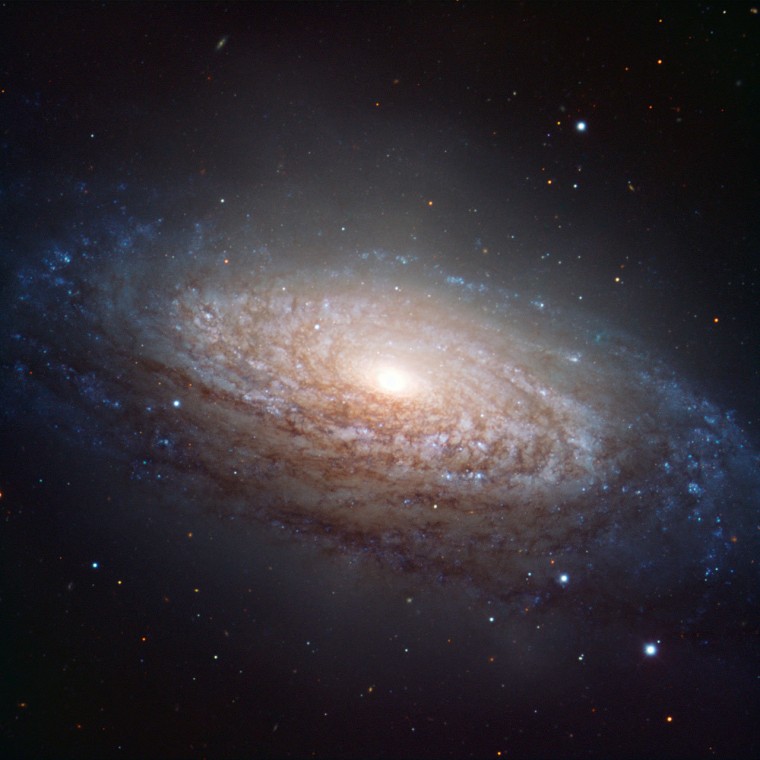The spiral galaxy NGC 3521 spans 50,000 light-years and holds billions upon billions of blazing stars. Like most spiral galaxies, it's thought to contain a supermassive black hole at its center. It's a swirling maw of raw cosmic power. So how could you call it "fluffy"?
NGC 3521, which is 35 million light-years away in the constellation Leo, is called a flocculent spiral galaxy because of the patchy, woolly look of its spiral arms. (Webster's defines "flocculent" as being "like wool or tufts of wool; fluffy.") Grand-design spirals such as the Whirlpool Galaxy have well-defined arms, but NGC 3521's irregular arms are heavy with interstellar dust. The galaxy has a warm and fuzzy look in this new image from the European Southern Observatory's Very Large Telescope in Chile.
The galaxy is actually easy to spot with a small telescope, but the folks behind NASA's Astronomy Picture of the Day say it's often overlooked by amateur astronomers in favor of the constellation's better-known spirals, such as the three amigos that form the Leo Triplet. That'd be a shame. Ukrainian amateur astronomer Oleg Maliy didn't forget about NGC 3521. He picked up on the ESO's archived imagery of the flocculent spiral, and submitted this processed image for the ESO's "Hidden Treasures 2010" competition. The picture ended up being ranked No. 15 on the treasure list. Diakuiu, Oleg!
More galactic views:
- Hubble delivers sparkling view of spiral
- Spiral galaxy glows like a spider web
- A first on film: Black hole gobbling gas
- Slideshow: Month in Space Pictures
Connect with the Cosmic Log community by "liking" the log's Facebook page or following @b0yle on Twitter. You can also add me to your Google+ circle, and check out "The Case for Pluto," my book about the controversial dwarf planet and the search for new worlds.
